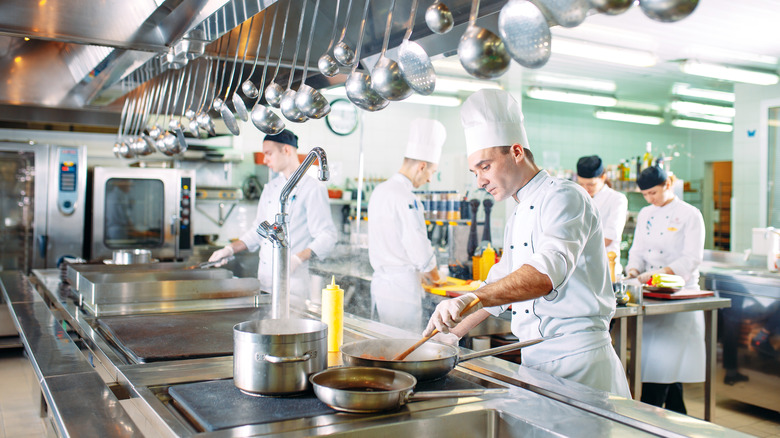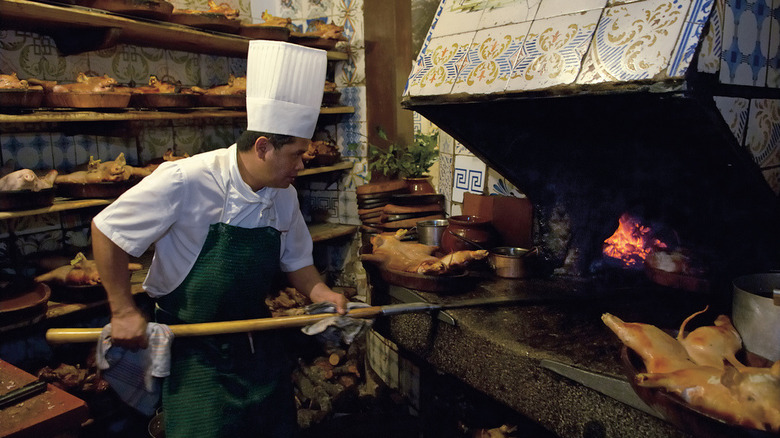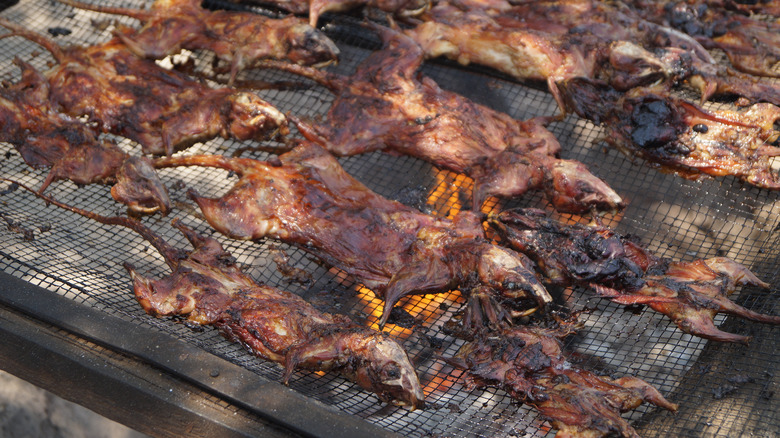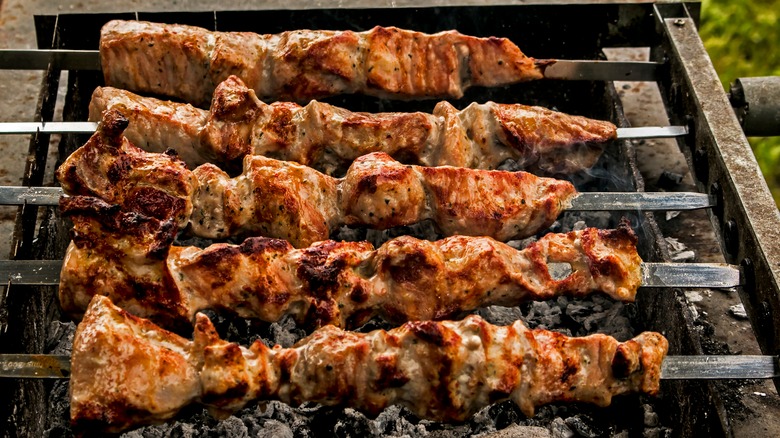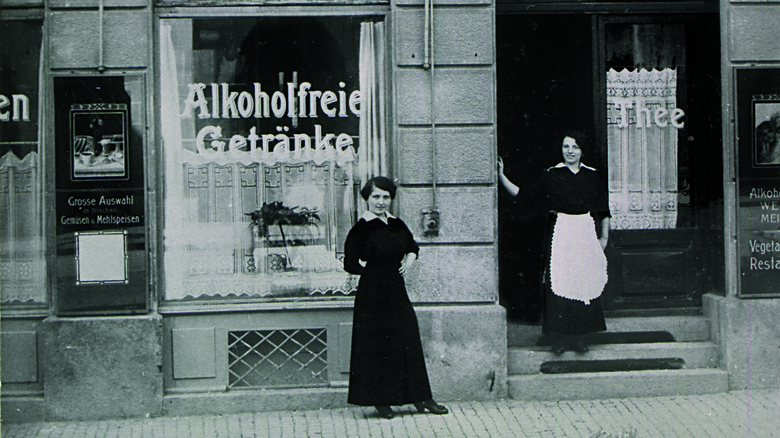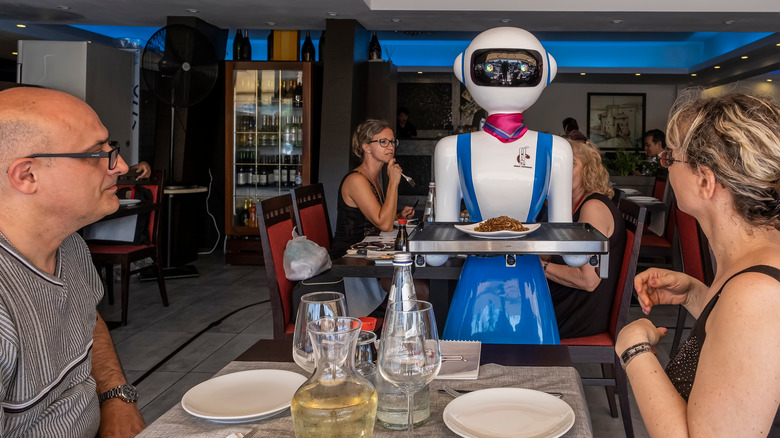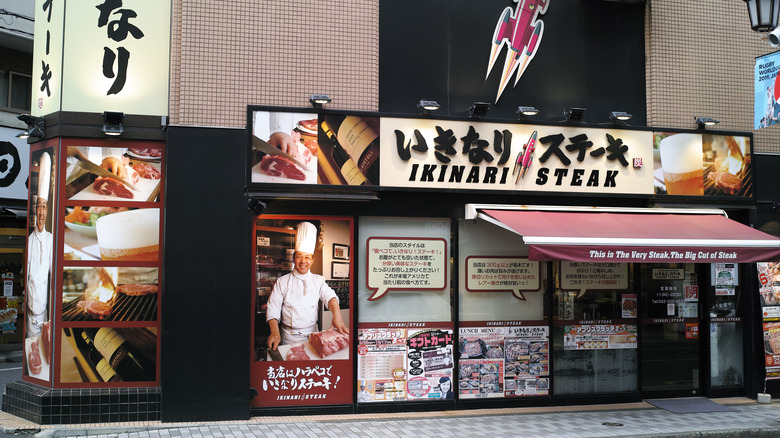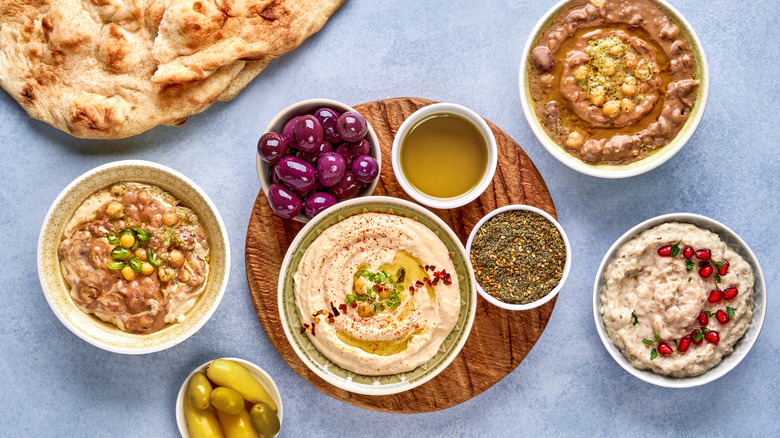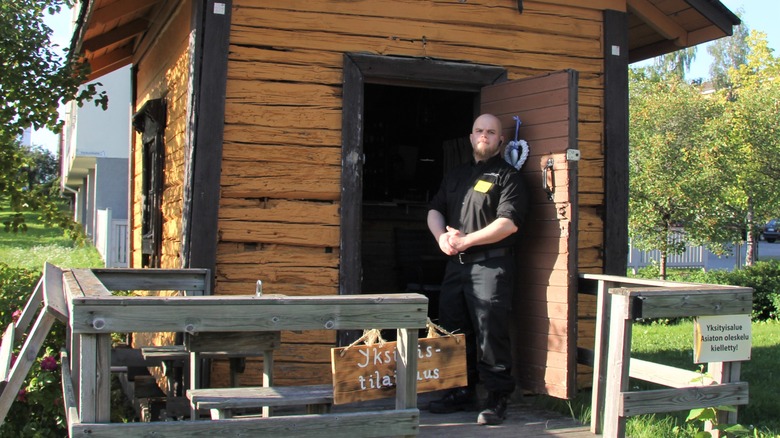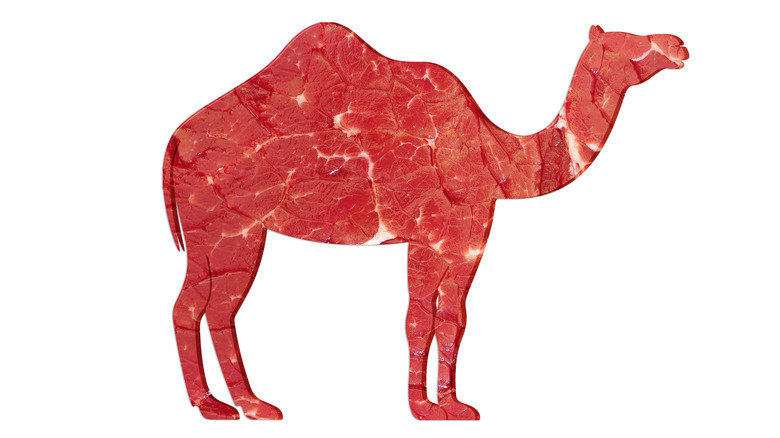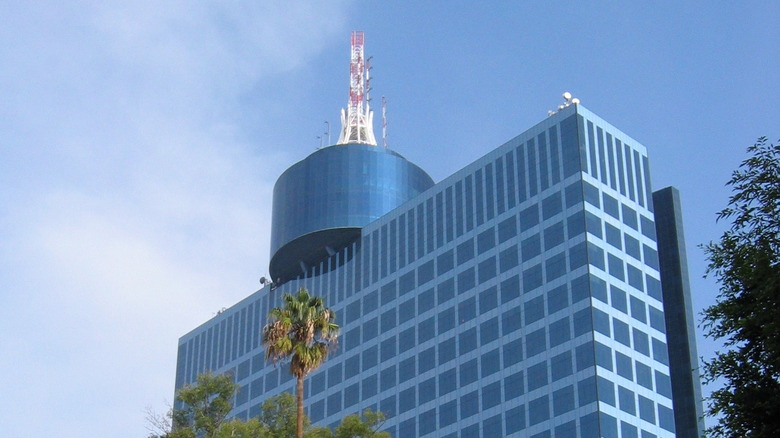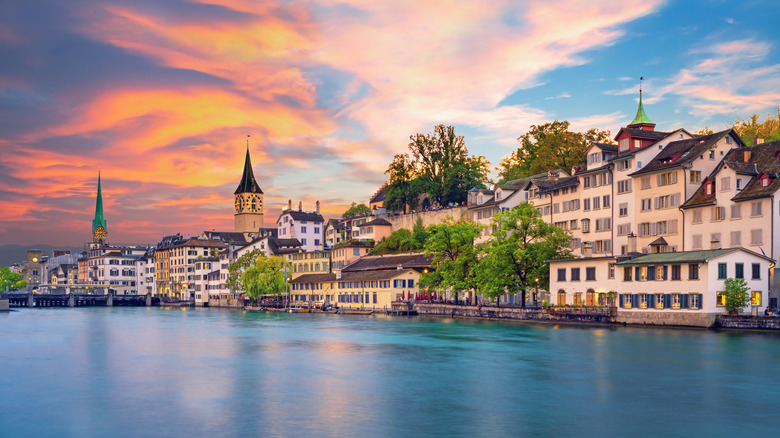Restaurant Guinness World Records You May Not Know Exist
Whether you like wolfing down cheese fries at a greasy spoon or savoring haute cuisine at the latest trendy venue, restaurants are an integral part of human culture. According to the National Restaurant Association, while restaurants have taken a body blow from the COVID-19 pandemic, they still represent a $659 billion industry in the United States alone. IbisWorld reports that as of 2021, there are 143,350 full service restaurants in America. With that type of volume, it's no wonder that competition in the food biz has led to all kinds of records.
Guinness World Records is the most well-known clearinghouse of popular records, and it has a long menu (pun intended) of records pertaining to restaurants. This article will explore a selection of these records which may at times make you scratch your head and wonder, "Why is there a world record for that?" No matter what, all these records are as interesting as a seven-course meal at the French Laundry.
Oldest restaurant
The year 1725 was the year Antonio Vivaldi published his monumental concerti, "The Four Seasons." The title is also used for one of the world's most famous restaurants, so there is a certain irony that, in that same year, the world's oldest restaurant was founded. Restaurante Botín, however, is not in the Big Apple, but across the pond in Calle de Cuchilleros in Madrid, Spain. Guinness World Records reports that the restaurant was founded when French chef Jean Botín and his Asturian wife built an inn inside a 1590 building. Originally the restaurant worked, according to custom, by patrons bringing in their own food which would then be cooked on the premises.
The restaurant also has some very antique accoutrements including a three-century-old cast iron oven. This is used to prepare the restaurant's specialties: suckling pig and roasted baby lamb. The restaurant still boasts its 18th-century style and is also featured in literature. Ernest Hemingway plugged the restaurant in his 1926 novel "The Sun Also Rises." His character Jake Barnes declares that Botín, "It is one of the best restaurants in the world. We had young roast suckling pig and drank rioja alta." According to Business Insider, the restaurant changed hands early in its history to Mrs. Botín's nephew and thus became Sobrino de Botín (Nephew of Botin).
Today the restaurant is run by the third generation of the Gonzalez family.
Highest restaurant
One notable record collected by Guinness World Records is the highest restaurant. This distinction belongs to a restaurant at the Chacaltaya ski resort in Bolivia which is at 17,519 feet above sea level. To put this into perspective, this would be like dining at Mount Everest's Base Camp. However, the story of this restaurant is a tragic one. Atlas Obscura reported that the ski resort, which had been Bolivia's only one, had been founded in the 1930s so that people could sled and ski down the Chacaltaya glacier. However, climate change and global warming caused the glacier to disappear in 2009. The ski resort became deserted with only two souls left who live there most of the year.
These two would be the brothers Adolfo and Samuel Mendoza; they maintain the refugio (the refuge) which is a building where they offer hot meals. It is in this way that the record for highest restaurant still stands. Those who come, however, do not visit to ski so much as to gawk at the barren rocks and the ramshackle ghost resort.
Most rats served in a restaurant
Let's say you are dining in a fancy restaurant, are pondering the menu, and then saw fried rat? That is just what you would get at the Jialu Restaurant in Guangzhou in Canton, China. Guinness World Records has granted immortality to this venue for "most rats served in a restaurant." Southern Chinese have been known to historically eat rats in hard times, but Jialu took it to a different level. A Baltimore Sun article on the subject asserted that the restaurant was a one-of-a-kind establishment which served a decidedly idiosyncratic cuisine which include braised rats, rats in black bean sauce, and stewed rats. The rats were proclaimed at the time to be country rats free of disease and fed on grain. That is, this restaurant was supposedly serving the Kobe beef of rodent meat. In fact, the name Jialu means "superior to deer," which, according to the Wall Street Journal, is a euphemism for rats.
So how many rats is the record set by Jialu? It stands at approximately 9,300 per year; as Guinness states,"self-proclaimed rat king Quang Li-Do has been catching and eating rats for 30 years." While it is unclear if Jialu is still operational today, China Daily reported in 2010 that rat dining had become more popular. The restaurant was selling over 88 pounds of rat per day.
Most northerly restaurant
Spitsbergen — which straddles the Barents and Greenland Sea — is a part of the Svalbard Island archipelago. The Atlantic reports that this Norwegian territory is some 650 miles from the North Pole, making its 2,2000 inhabitants the northernmost year-round human settlement in the world. And where there are people, there are restaurants. Guinness World Records names The Red Polar Bear as the most northerly restaurant in the world. One might expect to be feasting on foods unique to the arctic ecosystem, such as seal. However, this restaurant was an improbable kebab shop.
This is because the owner of the shop, Kazem Ariaiwand, was a refugee from Iran. According to the BBC, Ariaiwand escaped Iran to come to Spitsbergen's northerly settlement of Longyearbyen because the 1920 Treaty of Svalbard specified that people of any nation can come to the island. As a result, in 2003, Ariaiwand moved to Svalbard after his application for asylum was denied in Norway proper. He then worked in a grocery store before deciding to go into the kebab business. It beat whale and seal. He bought a former American military food truck, painted it bright red, and, voila, a business was born.
Sadly, The Red Polar Bear is no longer operating. As reported by icepeople.net, which bills itself as the world's northernmost alternative newspaper, Ariaiwand was arrested on the mainland and deported for violating his visa.
Oldest vegetarian restaurant
According to PBS, vegetarianism has been trendy since antiquity, but it was not until 1847 that the term was coined. Since then, vegetarianism has grown so that by the end of the century, the time seemed ripe to found what was to become the world's oldest vegetarian restaurant. Guinness World Records reports that Haus Hiltl of Zurich, Switzerland, was founded in 1898 and is now the world's oldest.
"Menus that Made History" informs us that the restaurant originally opened as the Vegetarierheim und Abstinenz Café. Its 1898 menu offered soup, salads, vegetables, and fried macaroni. However, the restaurant, according to the restaurant's own history, did not do well because of mismanagement and the stigma surrounding a vegetarian diet at the time. However, in 1903, the Bavarian-born Ambrosius Hiltl, a former tailor, became the restaurant's manager. Hiltl was a zealous vegetarian, crediting his recovery from rheumatism to the non-meat diet. In 1907, he bought the restaurant and hit the gas on further emphasizing the vegetarian niche. Since then, the business has been passed down in the family, and now the fourth generation of Hiltls run the restaurant. In fact, the Hiltls have built up the brand, running seven locations, a Hiltl Academy that teaches vegetarian cooking, and even a vegetarian "butchery."
First restaurant with robot waiting staff
Without excellent service, a restaurant is doomed to failure no matter how fine the cuisine is. But what if the wait staff became the reason for going to the restaurant itself? One record kept by Guinness World Records is "first restaurant with robot waiting staff." This is credited to the Two Panda Deli of Pasadena, California. According to Smithsonian Magazine, in 1983, Shayne Hayashi spent $20,000 each on Tanbo R-1 and Tanbo R-2 to serve the customers at his establishment. These 180-pound and four-and-half-foot-tall robots hustled Chinese cuisine such as spare ribs, General Tso's Chicken, and fried rice to the customers' tables. Although these technological waiters were prone to frequent accidents they quickly became beloved by the clientele. They also danced to disco when they didn't understand a patron's order and said, "That's not my problem."
The robots only lasted a few years, but it did promote hopes of an age of impersonal restaurant automation married to perfect service. It never fully caught on, although, as shown by CNBC, some restaurants started adopting robotic wait staff in 2021 due to labor shortages. In fact, some robots nowadays can even work the fry station.
Most servings of beef steaks sold in 24 hours at a restaurant
Of obscure restaurant Guinness records, few can compare to "most servings of beef steaks sold in 24 hours at a restaurant." This specialized record was set in 2018 when Ikinari Steak of Japan sold an incredible 1,734 steaks in a single day. Ikinari Steak admittedly is different in the steakhouse culinary niche since it offers fast service. Perhaps too fast. This global chain, as reported by New York Magazine, originally required diners to eat their steaks standing at a counter before bowing to pressure to allow for seating, at least outside of Japan. Unfortunately, the chain's international expansion did not pan out, since, as reported by Eater New York, the chain closed nine of its 11 locations in New York in 2019.
The record, as reported by Global News Wire, was set at the chain's Shinagawa Seaside Forest location in Tokyo. It was quite a busy day since 200 diners had already lined up for the 11:00 a.m. opening despite foul weather. It should be mentioned that although the official record is for a 24-hour period, Ikinari did it in 12 hours since the restaurant closed at 11:00 p.m.
Most restaurants eaten in in a lifetime
For gastronomes, the life of Fred E. Magel is a dream. This man set the Guiness World Record for "most restaurants eaten in a lifetime" by dining at 46,000 restaurants in 60 countries in over five decades. Scratching out the math, this tallies to over two and a half restaurants per day! Aside from being a Guinness World Record holder, Magel was also featured on "Ripley's Believe It Or Not." It is no surprise that Magel earned the nickname (per the Rotarian), "The Man Who Really Came to Dinner."
A 1977 article in American Heritage tells us that Magel hailed from River Forest, Illinois, where his father had been a "restaurant buff and a builder." Always accompanied by a book signed by Duncan Hines, Magel landed a job as a restaurant grader starting in 1928 with a career that came to an end, per the Michigan Alumnus, in 1982. He once quipped about the record, "I'm the only one in the [Guinness] book who breaks his own record daily." The Rotarian also reported in 1980 that Magel was once invited to a Rotarian luncheon. At the event, he commended the meal which was good, despite it being for such a "large group." His favorite meal, however, was at the Palace Hotel in Moritz, Switzerland.
Largest restaurant in the world
At over 210,000 square feet and with over 6,000 seats, Shaker Al Samman's Bawabet Dimashq (The Damascus Gate Restaurant) of Damascus, Syria is (or was) huge. So huge, in fact, that Guinness World Records named it "largest restaurant" in 2008. According to the Syrian Arab News Agency, the restaurant opened in 2002 along the road to the Damascus International Airport. It was also a rather well-appointed restaurant featuring waterfalls, fountains, and faux archeological ruins. Of course, the size is the predominant feature since no restaurant even comes close. The second largest restaurant, Royal Dragon in Bangkok, Thailand, can serve up to 5,000 patrons.
So big is Bawabet Dimashq that it is divided into six culinary themed sections: Syrian, Iranian, Arab, Chinese, Indian, and Middle Eastern. To service this number of customers naturally requires scaled up operations. The BBC reported that the restaurant employed 1,800 staff who were divided up among the different zones so it ran like a factory. Cooks could, for example, produce up to 30 servings of hummus a minute.
However, Bawabet Dimashq was forced to close from 2011 to 2018 due to war in the country. However, its fate today is uncertain. In 2020, one travel blog reported that during the war, it sustained major damages and may no longer be operational, though the Syrian Arab New Agency reports that it reopened its doors in 2018.
World's smallest restaurant
In a tiny yellow cabin in Iisalmi, Finland, is purportedly the smallest restaurant in the world: Kuappi, which means "Closet" or "Cabinet." Indeed, this restaurant is that. According to Atlas Obscura, it consists of a singular 86-square-foot building containing a tiny kitchen, a full bar, a lavatory, and a table for two. Indeed, two is the entire capacity of this restaurant — except during nice weather when another table for two can be set up outside. This place is so small that its full bar is only stocked with mini bottles, such as those you would get from a hotel fridge or airplane. Even though the restaurant has a small kitchen, most food is shuttled from the larger, neighboring restaurant, Olutmestari. It is worth noting that while the restaurant itself proclaims itself to be the Guinness World Record holder for smallest restaurant, the record itself is no longer active with Guinness.
The founders of Kuappi, as reported by the Culture Trip, are Sari Ruotsalainen and Annukka Pirinen. They are very much aware that the ridiculous size of their restaurant draws international attention. They stated, "We are glad to tell our customers about Kuappi and also take them inside to take photographs." If you want to visit this extraordinary venue, reservations are needed well in advance.
Largest chain of camel meat restaurants
Camel as a food item would be considered exotic in most cultures. However, in Saudi Arabia, camel as food is common. In fact, according to Global Trade, camel meat is an over $1 billion (and growing) industry. Most of this economic activity is centered in Saudi Arabia which consumes approximately 61% of camel meat in the world.
And much of this camel meat is consumed at Hashi Basha, which, according to Guinness World Records, is the "largest chain of camel meat restaurants." As to why Guinness chose this unique food item for a record over others is unknown, but it is certain that Hashi Bashi is a monetary success. The chain has founded 118 restaurants since it opened in 2016 in Khamas Mushait, according to its website. In fact, Hashi Bashi is looking to expand globally through a franchising model which could bring this unique food item to new cultures.
Largest revolving restaurant
One of the more fanciful restaurant gimmicks is the revolving restaurant. That is, a restaurant which is in a tower that slowly revolves to provide you a moving panorama of whatever city you are dining in. In effect, these are restaurants meant to impress and inspire romanticism. Travel Channel enumerates some of the most well-known of these venues, including the View in New York and SkyCity in Seattle, but also points out that many of these restaurants have closed due to their expensive upkeep.
Guinness World Records, meanwhile, has taken note of such unique establishments and bequeathed the title of "largest revolving restaurant" to Bellini in Mexico City. Built in 1994 on the 45th floor of Mexico City's World Trade Center, the restaurant is 11,244 square feet and can hold 332 diners. While not exactly cheap, the restaurant is purportedly more affordable than other high-end venues, per Mexico City Rough Guides. It is worth mentioning that Fodor's reported that while the name of the restaurant sounds Italian, its cuisine is grounded in Mexican and international cuisine. The Canadian lobster is recommended, although it is a bit pricey.
Most Michelin star restaurants in one city
While it may seem odd to the uninitiated, the Michelin company of France (which manufactures tires) is, in fact, the most important arbiter of haute cuisine in the world. This is because the Michelin stars given out in their guides have evolved to become the benchmark of the world's best restaurants. The number of stars given out can be a maximum of three, but even one star is a significant honor, making a restaurant's fortunes. As for three-star restaurants, these are considered the finest in the world. As of this writing, the Michelin guide lists 133 restaurants globally with such a rating.
One record that Guinness World Records keeps is the most number of Michelin star restaurants in one city. This is Tokyo, Japan, which they reported as having 230 restaurants as of 2019. In 2021, Conde Nast reported the number to be updated to 212. This is still the most in the world, broken down into 12 three-star, 42 two-star, and 158 one-star restaurants.
Most expensive city to eat in restaurants
Dining out can be an expensive proposition, and there is nowhere more expensive to eat than Zurich, Switzerland. Switzerland is known for being a pricey place to live, probably because, as told by the city's website, it is a global financial capital, which has naturally driven up prices. Numbeo, which analyzes the cost of living in major cities, shows that Zurich is almost 28% more expensive to live in than the notoriously expensive New York City. Guinness World Records recorded that in 2018, a basic meal for two at a restaurant in the city cost $72.30. This was followed by Copenhagen, Denmark, at $60.20, then San Francisco at $60 even. Thus, if you are travelling on a budget, you may want to avoid Zurich.
So where is the cheapest city to eat out? While Guinness does not bestow any record, Business Insider reported that in Manila, capital of the Philippines, dining out would cost a couple $15.
